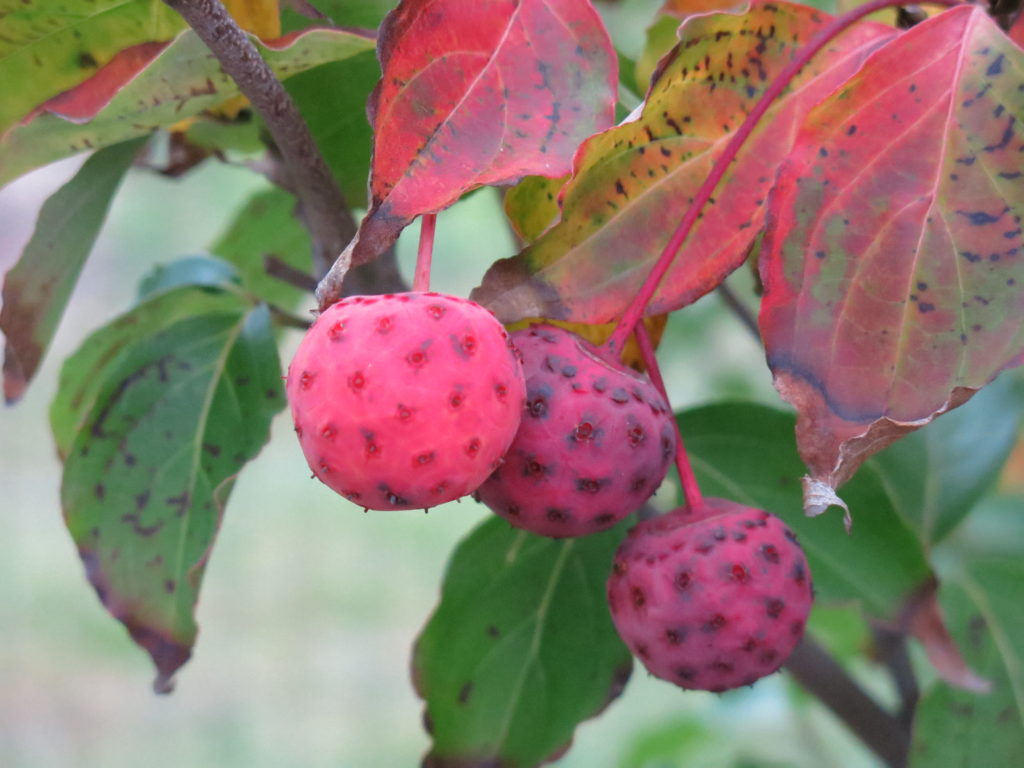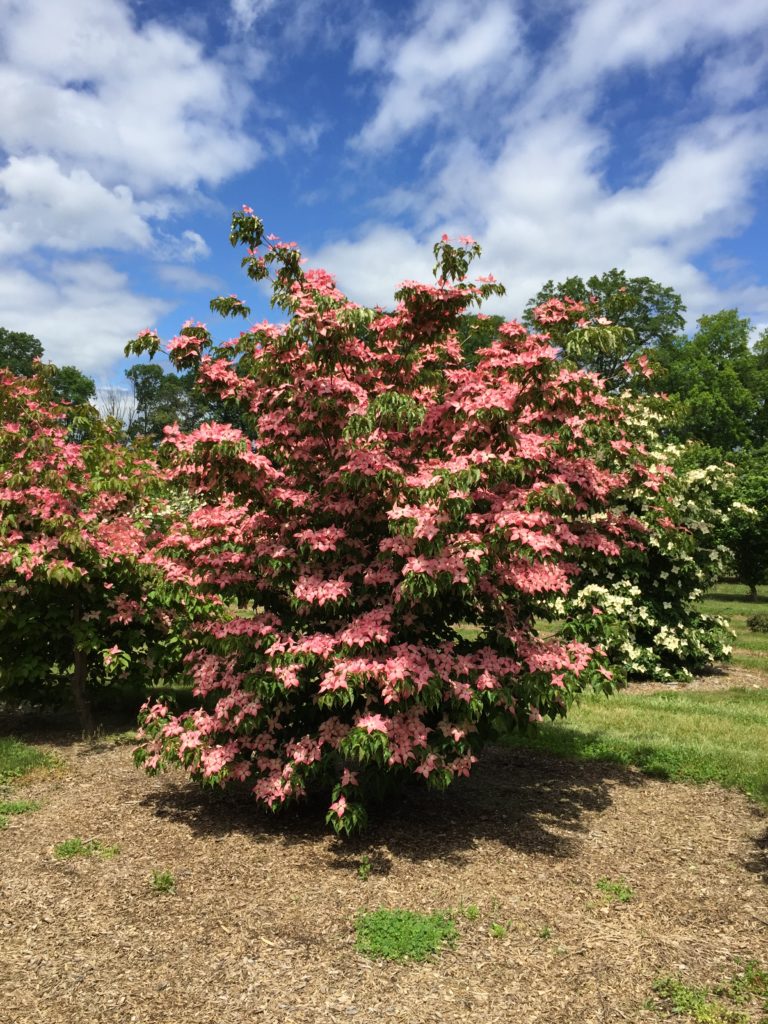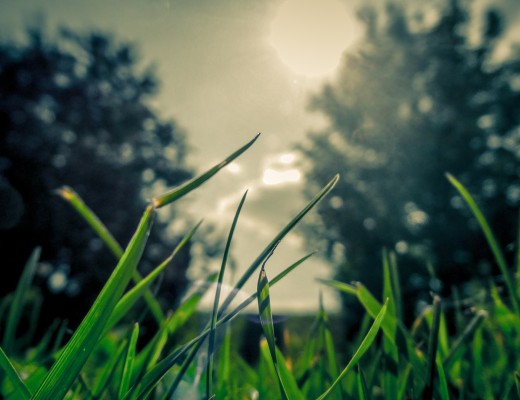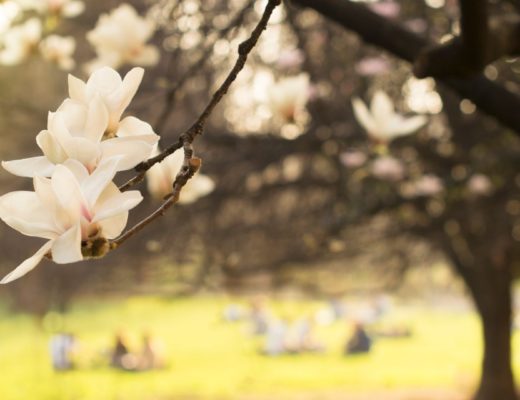Guest post by Dr.Thomas Molnar, Rutgers University
Are you looking for vibrant flowering trees to add to your yard, but also in need of a tree that is low-maintenance? Scientists at Rutgers University have developed a kousa dogwood (Cornus kousa) hybrid that is deep fuchsia in color and more resistant to common dogwood pests than the native kousa dogwood. It’s called the Scarlet Fire® Dogwood and it is shattering the nursery industry.
Dogwood breeding has been a focus at the university since 1970 under the direction of famed plant breeder Dr. Elwin Orton. Dr. Orton is most well-known for his hybrid kousa dogwood (Cornus florida x C. kousa) releases such as Stellar Pink® and Celestial®, and more recently the Venus® dogwood (Cornus kousa x C. nuttallii).
One of the earliest goals of the Rutgers breeding program was to develop a dark-pink kousa dogwood, as the kousa dogwood is a pest and disease-resistant, beautiful, hardy, small tree adapted to many climates and soils. Unfortunately, nearly all have white bracts or bracts that are inconsistently pale pink in color. Dr. Orton dreamed of developing a kousa with the bright pink to dark red blooms of our best varieties of the flowering dogwood such as Cherokee Brave®.
A Dogwood Like No Other
In New Jersey, flowering dogwoods typically bloom in early-to-mid-Spring before the leaves emerge, with kousa dogwoods flowering about a month after their own leaves are established. This is a time when few other trees are blooming, leaving the flowering tree landscape mostly devoid of color. Although many decades of effort were dedicated toward filling this void, at the time of Dr. Orton’s retirement, a deep pink kousa had yet to be reached.
Our newest release, Scarlet Fire® builds on earlier breeding efforts that span more than five generations of dogwood breeding. In fact, the male parent of Scarlet Fire® has a pedigree that can be traced back to original hand crosses made by Dr. Orton in 1972. They also tend to be much more vigorous and drought tolerant, especially when compared to flowering dogwood varieties (C. florida). They have become important staples in the ornamental landscapes of the eastern U.S. and parts of the Pacific Northwest. 
The Development of the Scarlet Fire
Dr. Orton’s research would lay the foundation for Dr. Molnar to continue the development of a deep-pink kousa. There was already a collection of hybrid trees that were used in breeding including varieties of dogwoods that had huge numbers of blooms, large bracts, gorgeous leaves, great growth habit, resilience to diseases, and the best pink colors. It took six years of cross-breeding before Dr. Molnar and his colleague John Capik would develop the ideal hybrid that boast the rich fuchsia color and hardy resistance to common dogwood diseases. The plant had the deepest pink bracts ever recorded in its 42 years of breeding history. They were ecstatic. The bracts glowed in full sun and displayed a mix of deep pink and fuchsia color.
This plant was immediately protected inside a strong, metal, deer-proof fence. Several trees were grafted for backup, and then began a very anxious wait until bloom season in 2013 to confirm what was observed. Amazingly, the trees again bloomed with the striking deep pink color. With two years of confirmation of such a unique tree, budwood was sent to a few trusted nurseries to test the tree and cultivate more. The following years produced the same blooms with spectacular color. Tests at the offsite nurseries were promising. The hybrid tree grew fast and was well branched with vibrant leaf color. In 2016, Rutgers University officially released the Scarlet Fire dogwood tree to the nursery industry.
In the Landscape
 Although the Scarlet Fire is now available on a wide-scale, its availability is still limited to retail outlets. This year, the Arbor Day Foundation was one of a few exclusive nurseries to offer the tree for sale. It thrives in the same landscapes as kousa dogwoods, hardiness zones 5-8. It is medium-growing and typically blooms within two years of planting with a strong tolerance to pests and disease.
Although the Scarlet Fire is now available on a wide-scale, its availability is still limited to retail outlets. This year, the Arbor Day Foundation was one of a few exclusive nurseries to offer the tree for sale. It thrives in the same landscapes as kousa dogwoods, hardiness zones 5-8. It is medium-growing and typically blooms within two years of planting with a strong tolerance to pests and disease.
Thomas Molnar received his PhD from Rutgers University in 2006. He is currently an Associate Professor in the Plant Biology Department of the Rutgers University School of Environmental and Biological Sciences (New Brunswick, New Jersey, USA). His research program concentrates on the genetic improvement and study of hazelnuts (Corylus) and large-bracted dogwoods (Cornus).





thank you
amazing article.
Thanks for reading!
Wrote down log in info and you can not find me. I am done !
Hi John, we’re sorry to hear that our website wasn’t recognizing your login information. If the issue continues, please email us at info@arborday.org, and we will provide you with a temporary password. Thanks!
Would this tree thrive well in Kentucky? Would there need to be more than one tree planted for cross pollination?
Hi there, this tree can be expected to grow in hardiness zones 5-8 (here’s a quick link to locate your hardiness zone: https://shop.arborday.org/content.aspx?page=zone-lookup). One tree will produce flowers, there is no need for two trees to cross pollinate.
Hi, would this dogwood thrive in an exposed position in my garden where it would get some strong winds sometimes (I’m in southernUK, winters not so cold as USA. so temperature not a problem, just the coastal winds.
Would the scarlet dogwood flurish in ohip
Hi Floyd,
The Scarlet Fire Dogwood flourishes in hardiness zones 5-8. So, depending on where you’re located in Ohio it may or may not be the best choice. Here’s a link to quickly locate your hardiness zone: https://shop.arborday.org/content.aspx?page=zone-lookup.
Christine,
Thank you for your article. We were looking for a flowering tree to plant as a thank you gift at a friend’s home outside Nashville. I love the colors and three season beauty and so will they. Took a bit but found one in a nursery there. Your article swayed us greatly. Thanks again!
Will this tree grow in a shaded area
This tree grows in full sun and partial shade.